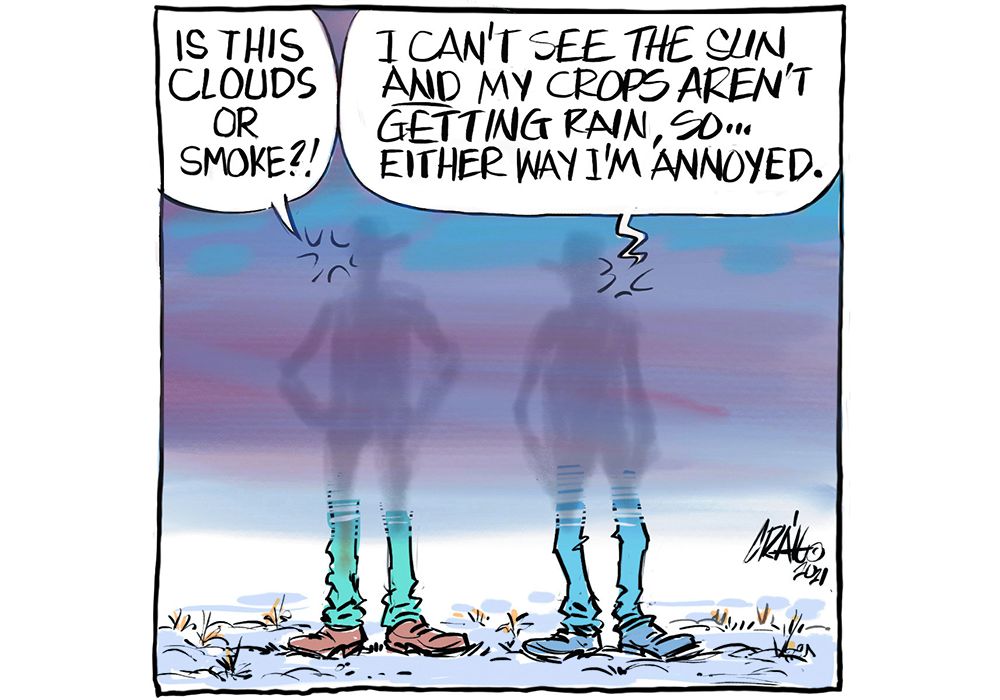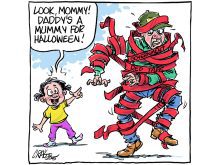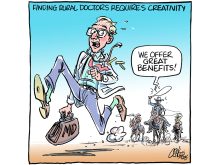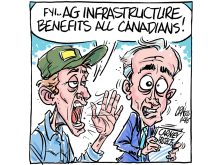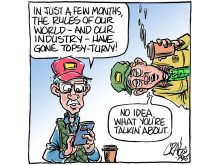There’s nothing much worse than drought when it comes to agricultural afflictions.
Floods, insects, disease and low market prices aren’t fun either but when the rain stops falling and the mercury soars, nothing grows.
And when nothing grows, there’s not much that can be done.
“Hopelessness” is how a Manitoba cattle producer recently described the mood in his part of the province as a deep-seated drought takes hold across much of the Prairies.
So what is there to do?
Read Also

Farmer ownership cannot be seen as a guarantee for success
It’s a powerful movement when people band together to form co-ops and credit unions, but member ownership is no guarantee of success.
Manitoba farm groups met recently with former agriculture minister Blaine Pedersen to form a working group that will meet again soon to discuss possible ideas.
Alberta Beef Producers has urged its members to ask their local counties and municipalities to declare states of agricultural emergency to trigger the federal-provincial AgriRecovery disaster relief framework. At least one, Foothills County, has declared a state of municipal agricultural disaster.
Saskatchewan producers also want their government to “respond with an expedited Agri-Recovery assessment and low-yield threshold approvals.”
As well, they want the Farm and Ranch Water Infrastructure Program to become an 80-20 cost share with higher caps in drought regions.
Other ideas include:
- Extending AgriStability’s enrolment period and increasing coverage levels.
- Providing assistance with water supplies and water quality management.
- Directing the Saskatchewan Crop Insurance Corp. to fast-track the conversion of drought-damaged crops to livestock feed.
- Implementing tax deferral with a five-year minimum.
These are all good ideas, although developing dugouts and water distribution infrastructure is more of a long-term solution.
Tax deferrals will happen, but that’s next year country.
Crop insurance agencies must definitely hire more staff and do whatever else it takes to get adjusters into the fields as quickly as possible to ensure failed crops can at least be used as livestock feed before it’s too late.
The AgriRecovery proposal seems to have the most legs, and it’s encouraging to see governments taking it seriously.
Provincial prairie governments have asked Ottawa to trigger the program, and federal agriculture minister Marie-Claude Bibeau made all the right noises at last week’s agriculture ministers meeting.
Alberta agriculture minister Devin Dreeshen offered additional reassurance when he said his government has “received verbal commitment from Ottawa that a joint AgriRecovery program will be initiated to support prairie producers affected by drought conditions prior to (a federal) election.”
Let’s hope so.
The irony in all this is that earlier this year agriculture was being touted as one of the key drivers that would help the country make its post-COVID economic recovery.
This is now at risk, and if something isn’t done soon, agriculture won’t be leading anything except a trail of dust.
So back to the original question: what is there to do?
In a nutshell, governments must explore every possible avenue, and do it as quickly as possible.
The best answer, of course, is rain — and that’s the one thing that is out of all of our hands.
Karen Briere, Bruce Dyck, Barb Glen and Mike Raine collaborate in the writing of Western Producer editorials.

